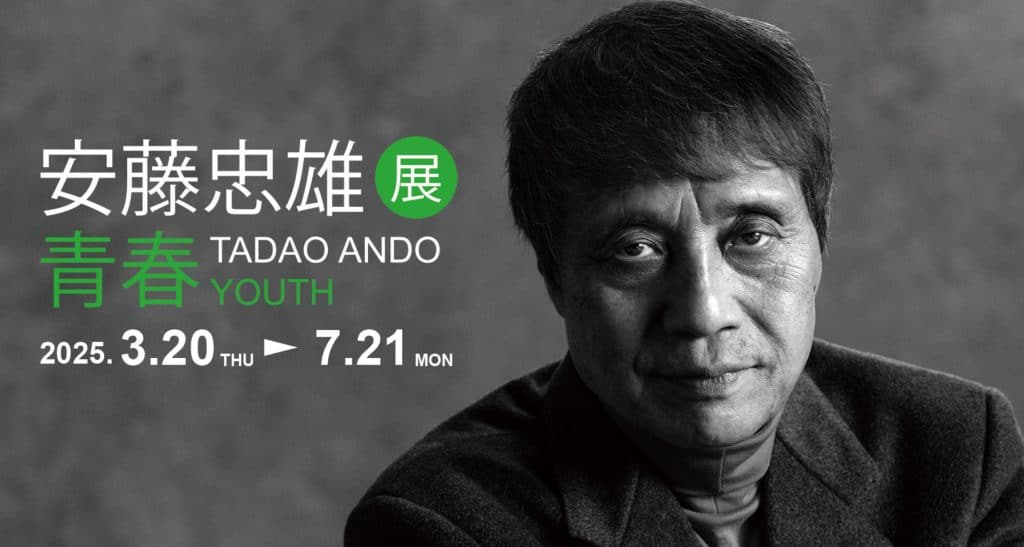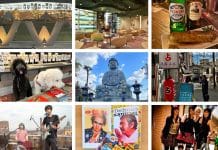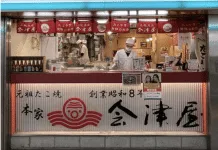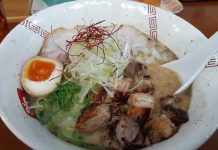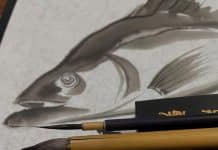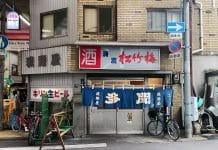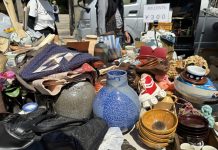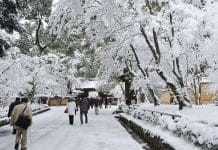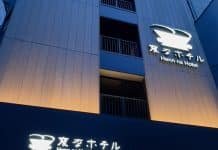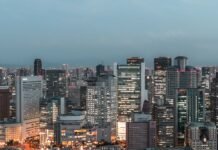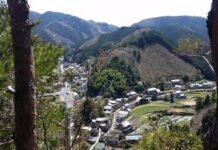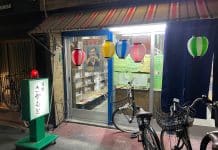Table of Contents
Introduction
Here are the best things to do in Osaka in April. Welcome to another edition of the monthly column Undiscovered Osaka that goes deep. This month we have a classic coffee shop in Umeda, a wonderful Italian stand up bar in Abeno, and a new mall and dog park in Kishiwada. We also introduce a fantastic shrine in Higashiosaka that is straight out of a Studio Ghilbi. Plus recommended live shows and art exhibitions. This time we’re doing a bit of a dive into the history of a couple of the places featured here to make the experience more worthwhile.
Coffee: Madura and King of Kings in Umeda
I first discovered a photo of King of Kings in a tattered old magazine I purchased at a dusty used bookstore. The stunning stained glass window and grand interior immediately caught my attention, and I knew I had to visit as soon as possible. After making the trip, I delved into the history of its sister shop, Madura, and the remarkable man behind them both.
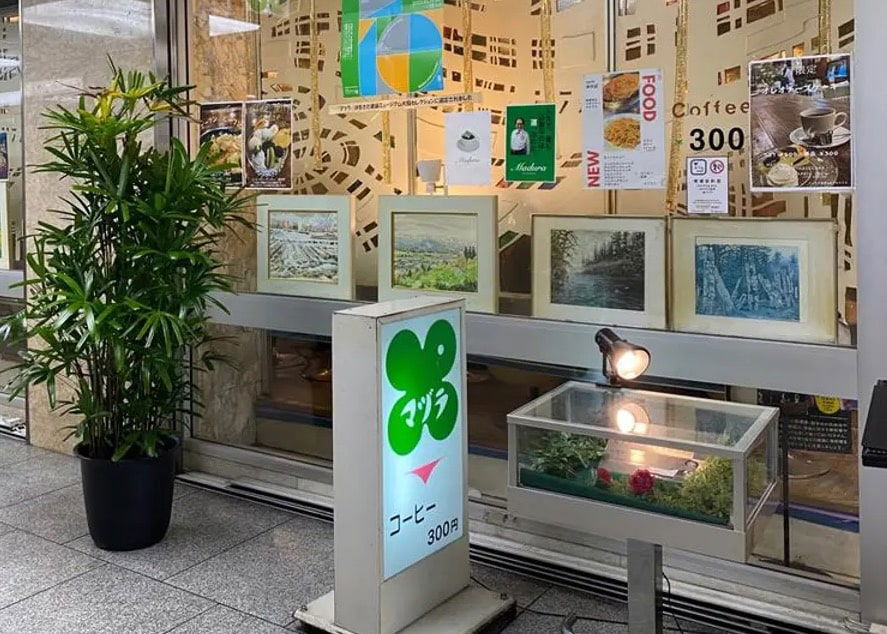
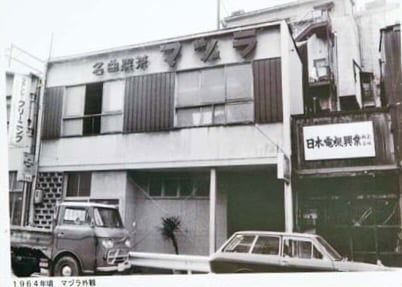
Liu Shengsen was born in Taiwan in 1920. After graduating university Liu moved to Osaka to work for a trading company, but his dream was to open a coffee shop in the style of Bolero, the world-famous coffee shop in Taipei. In 1947, he opened a café in a yamiichi—black market near Osaka Station in Umeda, naming it Madura after an Indonesian island he had visited as a student and remembered fondly.
Liu brought an electric gramophone from America so he could play classical music in the shop. Business was booming—the combination of classical music and fresh brewed coffee made the shop an instant hit. Liu was able to remodel the shop into a three story building with a residence on the second floor.
Move to the Ekimae Building
By the end of the 1960s, Osaka had begun constructing the Osaka Ekimae Buildings on the former site of the black market. Ekimae Building No. 1 was completed in 1970, and Madura relocated to its basement. The shop’s design was entrusted to architect Nahiko Sokawa, who created two distinct themes.
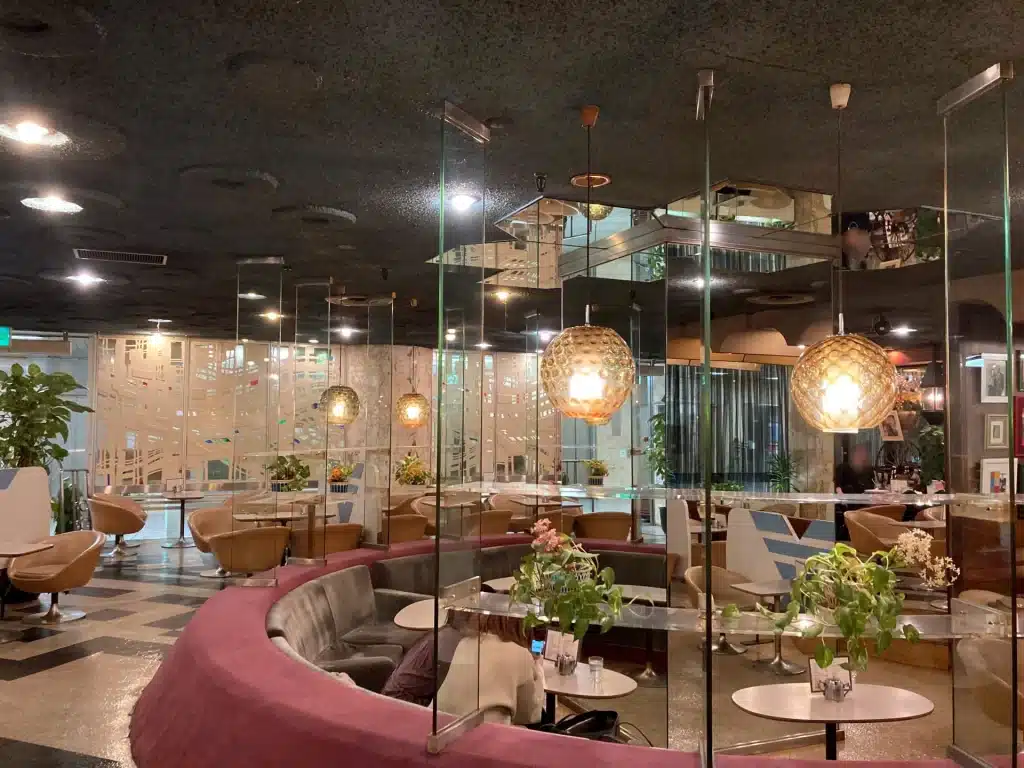
One half, completed in 1969, features a chic and calming atmosphere. The other half, finished in 1970 and called “Space,” was inspired by the Apollo Moon Landings and was designed to look the the inside of a spaceship. It was also influenced by futuristic atmosphere of Expo 1970, which was held in Osaka.
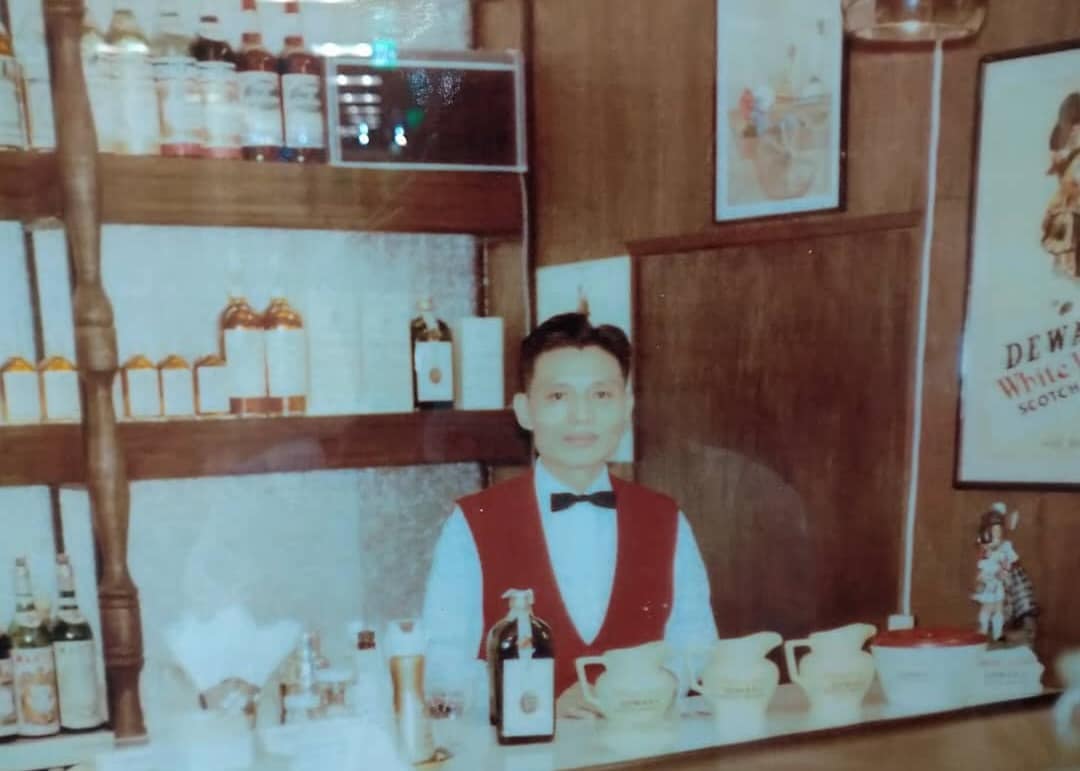

Mr Liu Shengsen sadly passed away in 2023, at the age of 103, and the shop is now run by his son and daughter. The retro-futuristic space remains unchanged and you can read about a recent visit here.
Visiting King of Kings
Sister shop King of Kings was opened in 1970. It was designed by architect Numata Shuichi, who was only 28 at the time. The young architect had the idea to add stain glass windows with an elaborate color pattern to take advantage of the fact that the underground area was bright from morning until night. Despite the high cost at the time, Liu Shengsen immediately agreed to the plan.

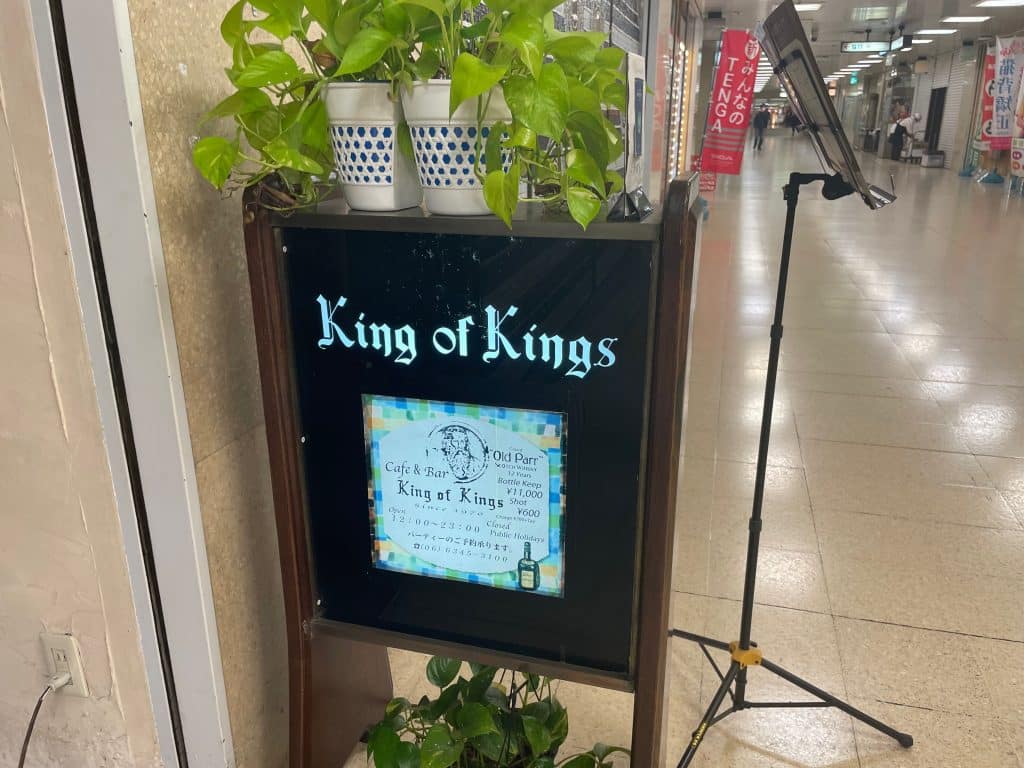
I stopped by King of Kings on a weekday and it was rather quiet with very few customers scattered about. I chose a seat near a vintage piano in pristine condition. He named the coffee shop King of Kings because he wanted his customers to feel like kings wherever they sat. I ordered a cup of coffee and a club sandwich.
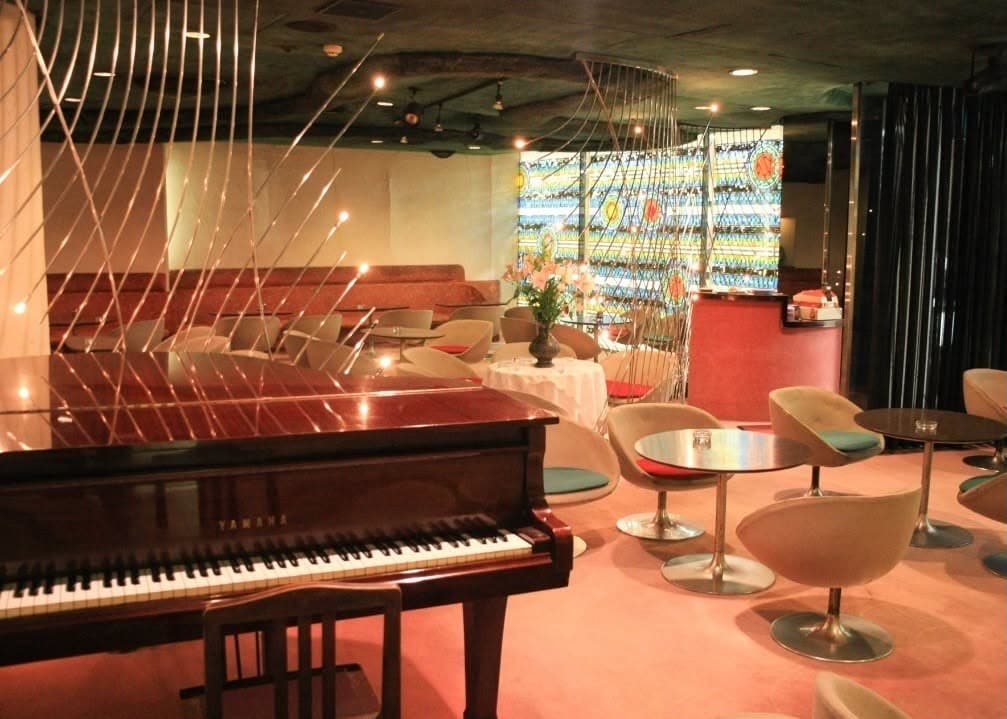
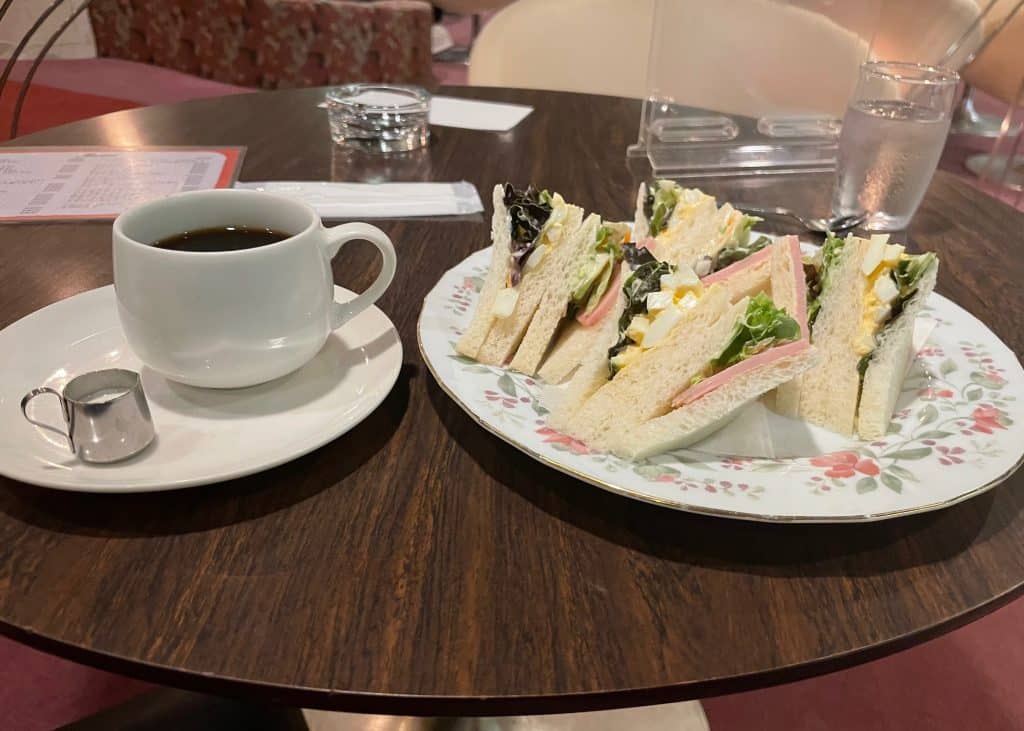
When he opened the shop, Liu charged ¥250 yen for a cup of coffee, and didn’t raise the price for over 30 years, even during the high rolling days of the bubble economy. The price is currently ¥350, but everything on the menu goes up by ¥200 after 5PM. It’s a good thing I arrived just in the nick of time at 4:30. But seriously, I wouldn’t mind paying extra, because it looks like a museum. In fact, sister shop Madura was designated a Living Architecture Museum by the City of Osaka in 2014.
King of Kings: A Classic Bar
I decide to look around before my order arrives. On the way to the restroom I spy the entrance to the bar, which looks like something out of a classic Hollywood film. The bartender is a young man who is impeccably dressed in a freshly ironed white shirt with a black vest and bow tie that is definitely not a clip-on.
When the shop first opened they served their own brand of blended Scotch whiskey called King of Kings. Nowadays they serve Old Parr, which was considered a status symbol during the Showa era. Despite the decor, the drinks are reasonably priced; a glass of Old Parr is only ¥600. It comes with a piece of chocolate, a tradition here, for an extra ¥200.
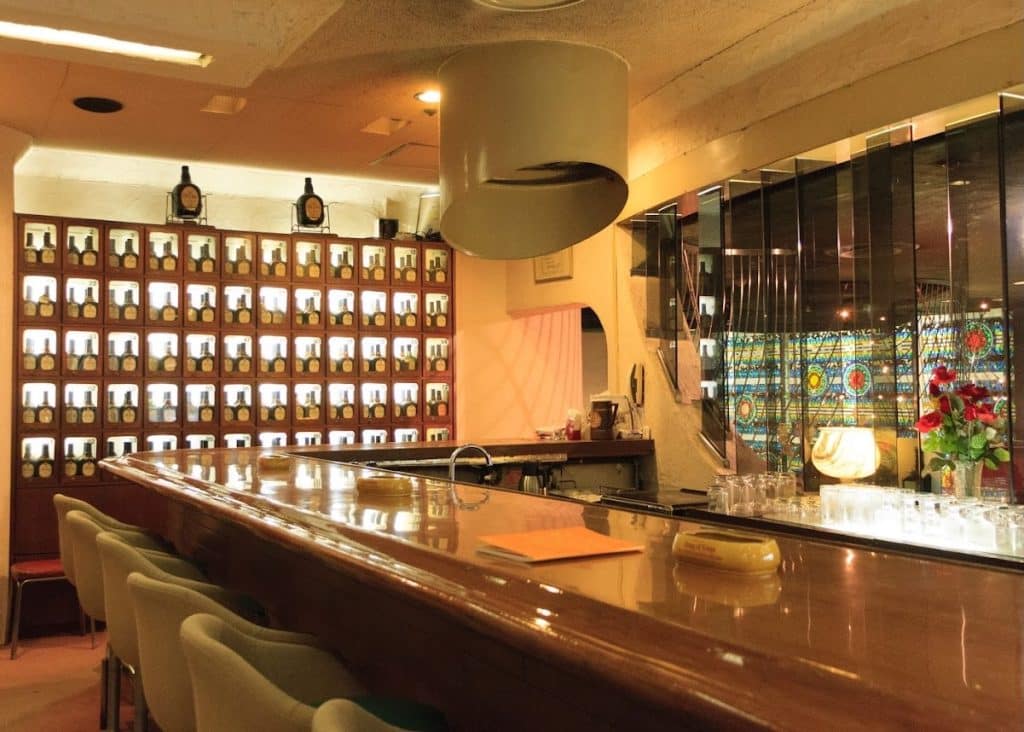
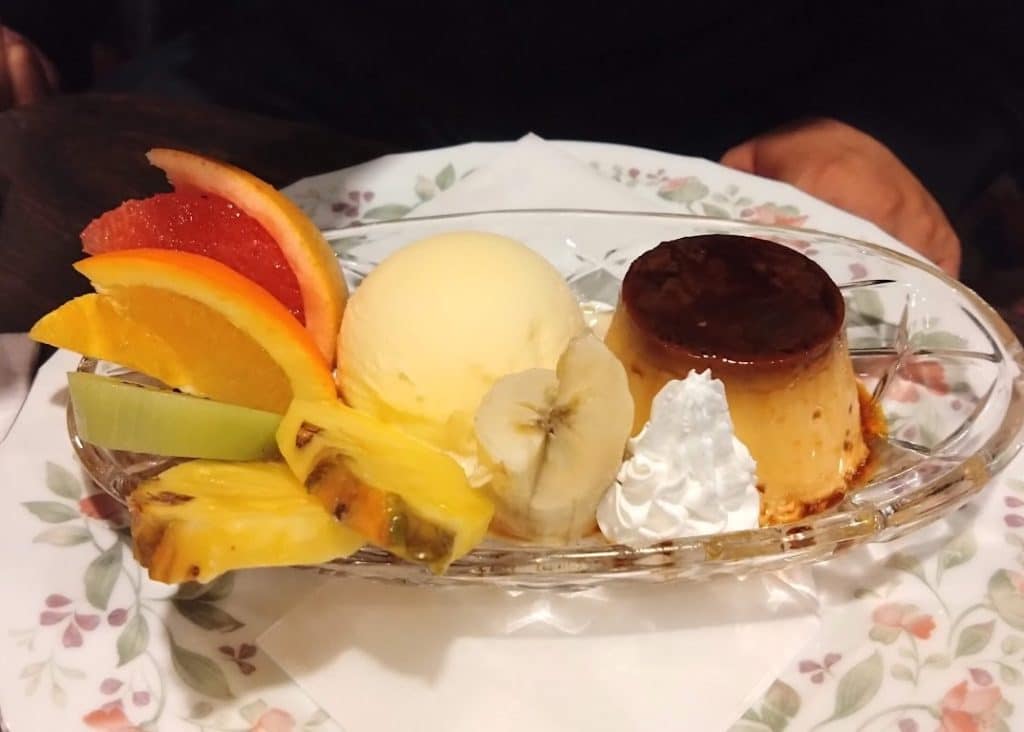
I noticed that some of the customers have bottle keeps with their names in them which are stored in an impressive display case. I decide right then and there that one of my life goals is to have a bottle with my name on it at this very place. Sure, it costs 11,000 yen but doesn’t everyone deserve to feel like a full-fledged king every once in a while?
King of Dessert
Realizing that my wife would never allow it, I decide to do the next best thing by splurging for dessert. I choose pudding a la mode which comes with vanilla ice cream, whipped cream and fresh slices of pineapple, orange, kiwi and grapefruit. It sets me ¥750, which is exactly ¥10, 250 less than the price of a bottle keep, but I savor every bite and morsel.
Italian Standing Bar: Bacaro in Abeno
Bacaro is an Italian Cicchetti (tapas) standing bar near Osaka Metro Abeno Station, specializing in prosciutto, salami, cheese, and a selection of Italian beer, wine, and spirits. The bar is owned by Hiroki Nanno, who also runs the nearby Burgers and Tacos Iakatorih. However, the creative force behind Bacaro is the manager, Alessandra, a trilingual Venetian who speaks fluent English and Japanese (Osaka dialect) in addition to her native Italian.
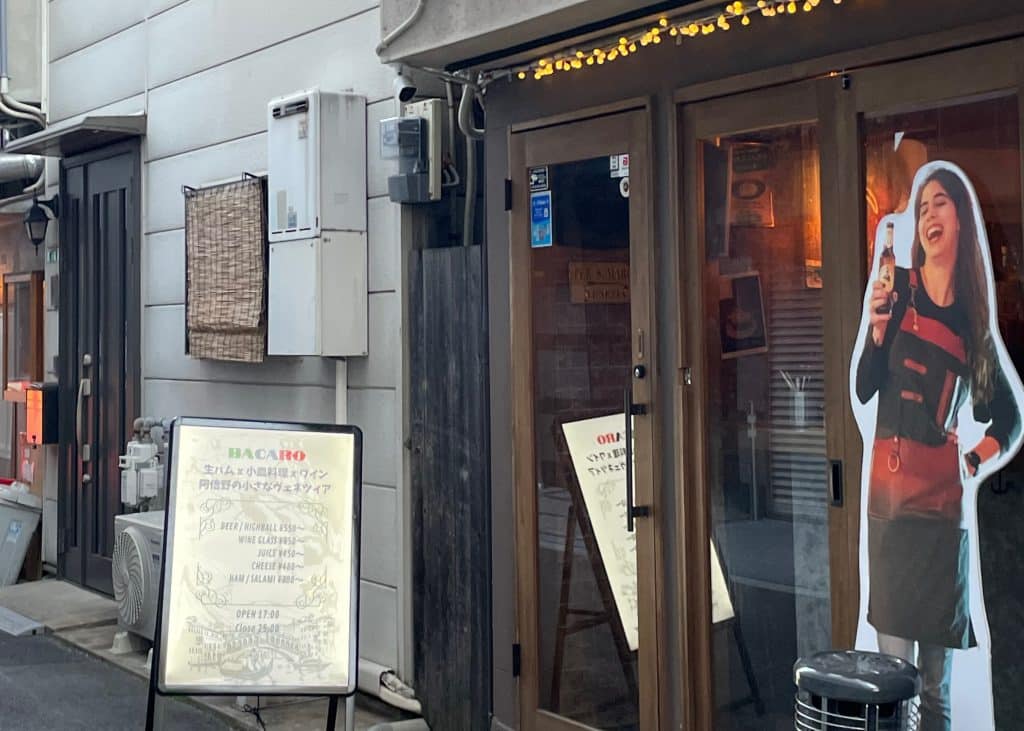
Trilingual Hospitality
The food at Bacaro is excellent, and we’ll get to it shortly, but let me start out by stating that in a country known for excellent omotenashi service, Alessandra takes it one step further by creating a multilingual environment in which a first-time customer will feel welcome the moment they step through the door. The first time I visited Bacaro was with with three other friends, including an Italian speaker. From a linguistic standpoint it was an absolute pleasure to watch Alessandra switch back and forth between the three languages without missing a beat.
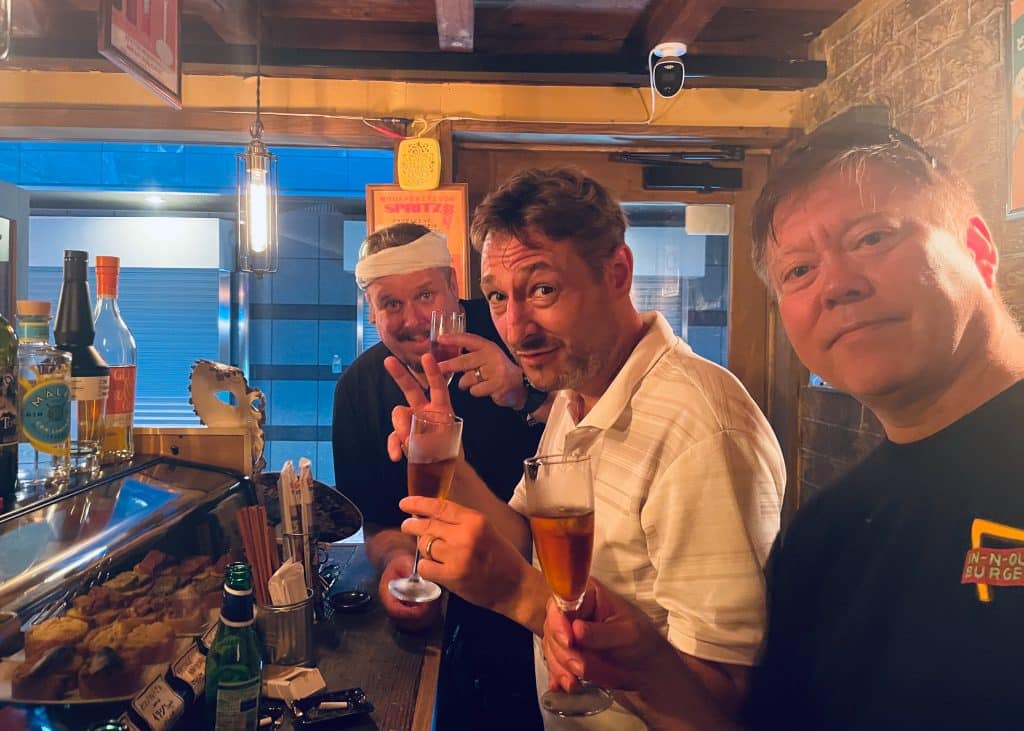
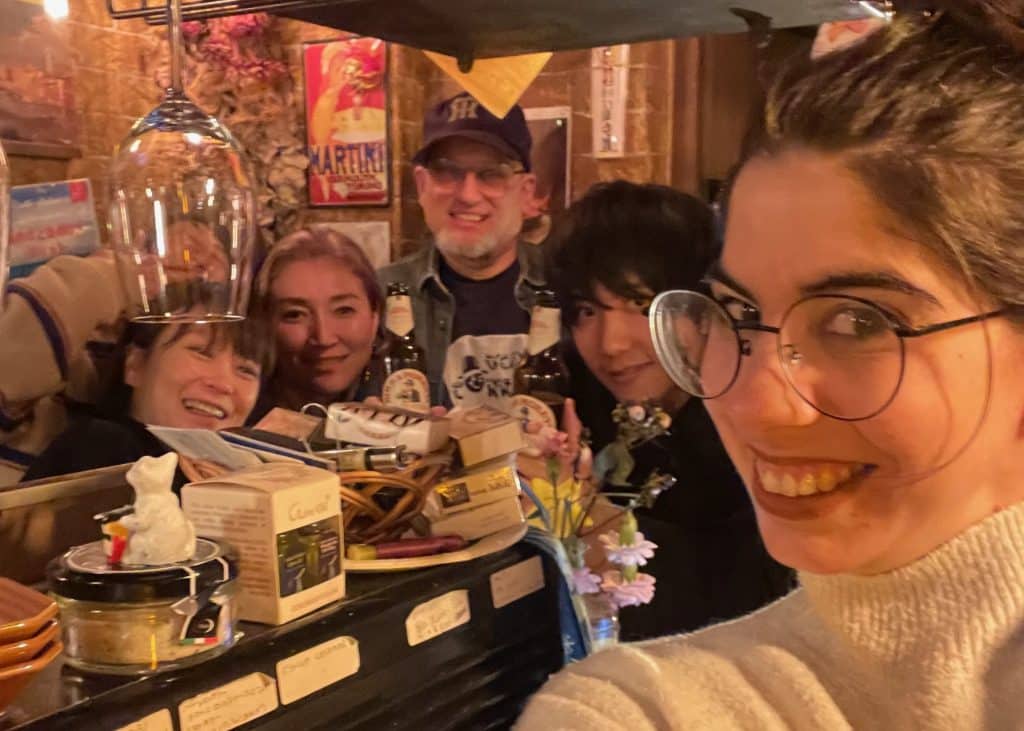
The second time I visited the other customers were all Japanese and they seemed surprised at first to see two foreigners conversing in Japanese. I told them, “Well, we don’t want to leave you out,” and for the rest of the evening we spoke like old friends, talking about our favorite restaurants in Osaka. Many of the regulars have been to Italy and I regaled in hearing their stories about their experiences in such a beautiful country. There we moments when I felt, “Ah, this is what is must feel like to travel to Italy,” especially once the food arrived.
A Taste of Italy
Prosciutto crudo (cured ham) is known as nama hamu (raw ham) in Japanese. You can choose from four different types from around Europe: Jamon Serrano (Spain), Jambon Savoie (France), Prosciutto Cotto (cooked ham) and Mortadellia, both from Italy. I chose a moriawase (combination) of three different types of ham and small plate of Formaggio (cheese) chosen by Alessandra, which paired nicely with the bottle of Peroni Beer. Next time I’ll go in a bit more prepared now that I have studied up.
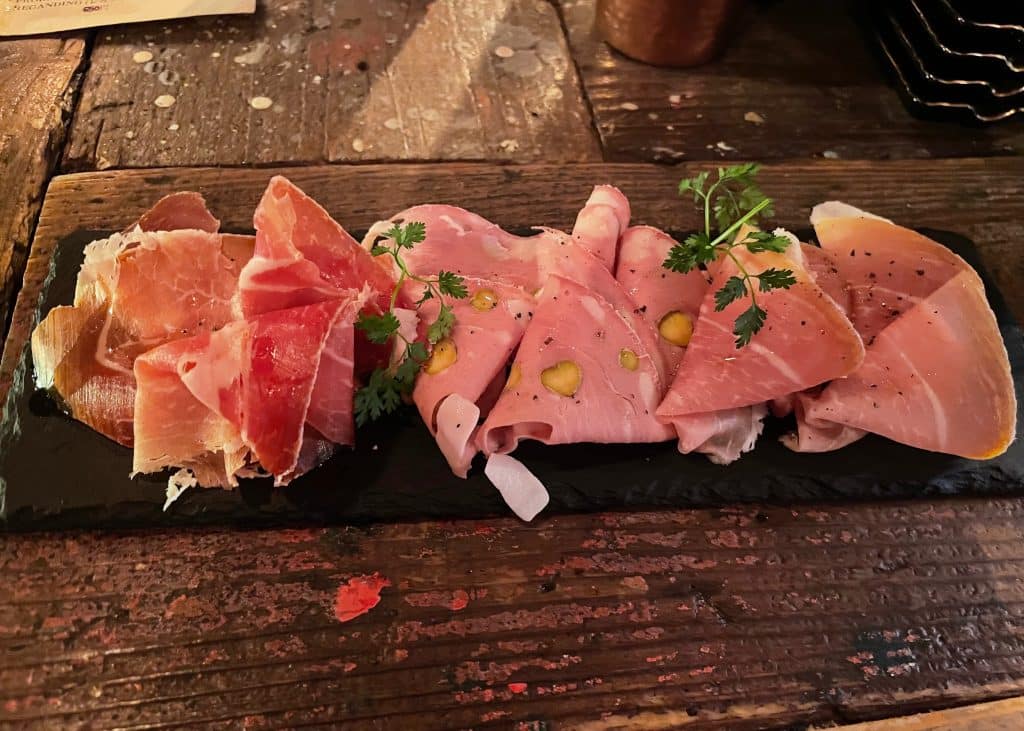

One of the regulars had high praise for the Salsiccia (Italian Sausage) so I ordered it with Birra Moretti, which I have to say was even better than the Peroni Beer. For my final order, I decided to go out of my comfort zone and went with an antipasto or starter known as Crostini. The ones on the right with the creamy, white topping garnished with fresh herbs are Baccalà Mantecato Crostini, a Venetian specialty made from whipped salt cod. The other selections on the left are Crostini con Sarde e Pomodoro, sardines on a semi-dried tomato spread. I end the evening with a wonderful tonic digestive called Vecchio Aamaro del Capo.
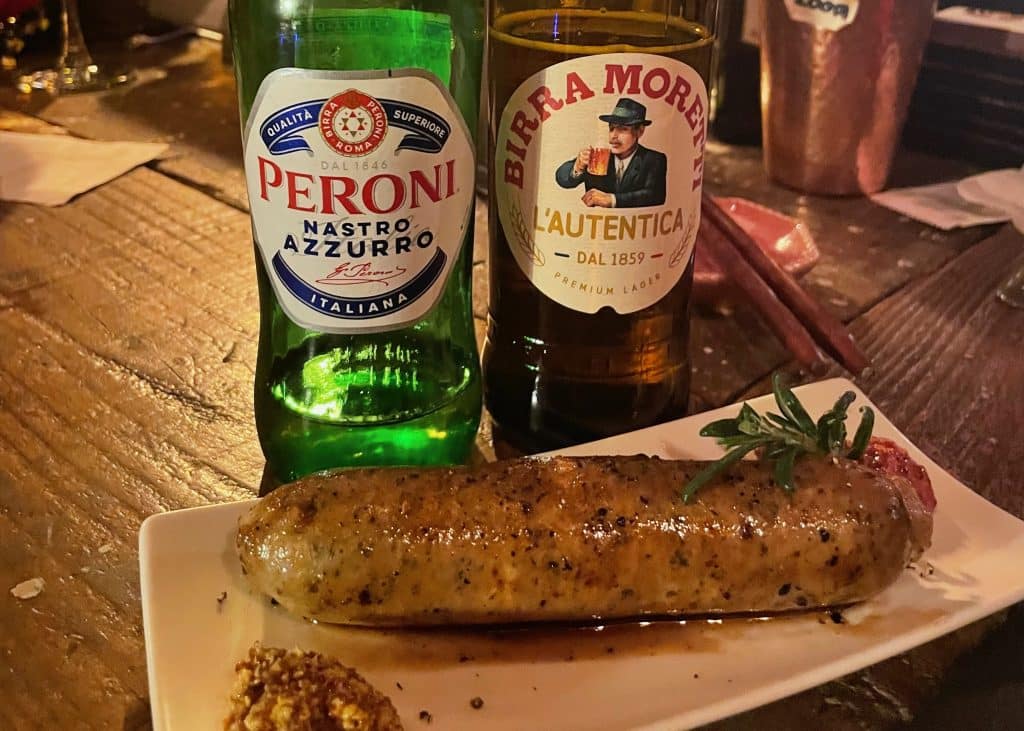
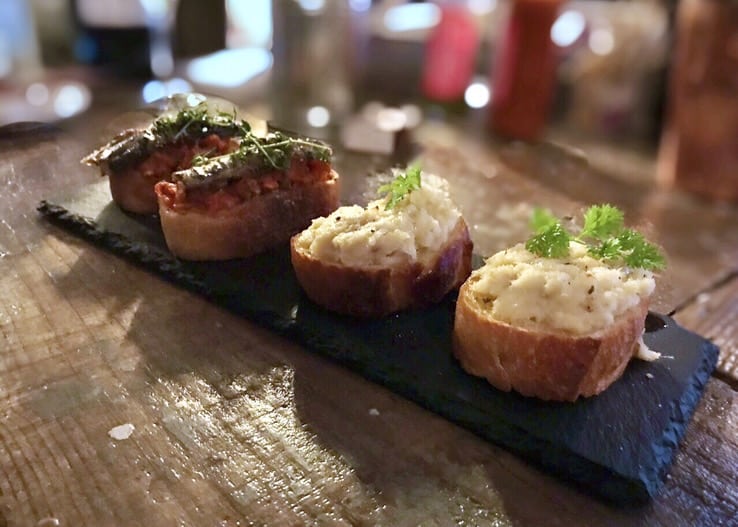
Whatawon in Kishiwada: Bring Your Dogs
Whatawon is a shopping mall that opened in the hills of Kishiwada that features a food court, an onsen, space to barbecue, and a live space called “Floor Disco Ball” for various events including free film screenings, club nights and music performances. The best thing of all is that dogs are giving VIP status. There’s a spacious dog run, meet up events dog owners, and even a special restaurant where your beloved pets can be served at tables. The name is a pun on What a Wonderful World by Louis Armstrong and the fact that dogs in Japan are often called Won-chan because of how they bark in Japanese: Won Won.
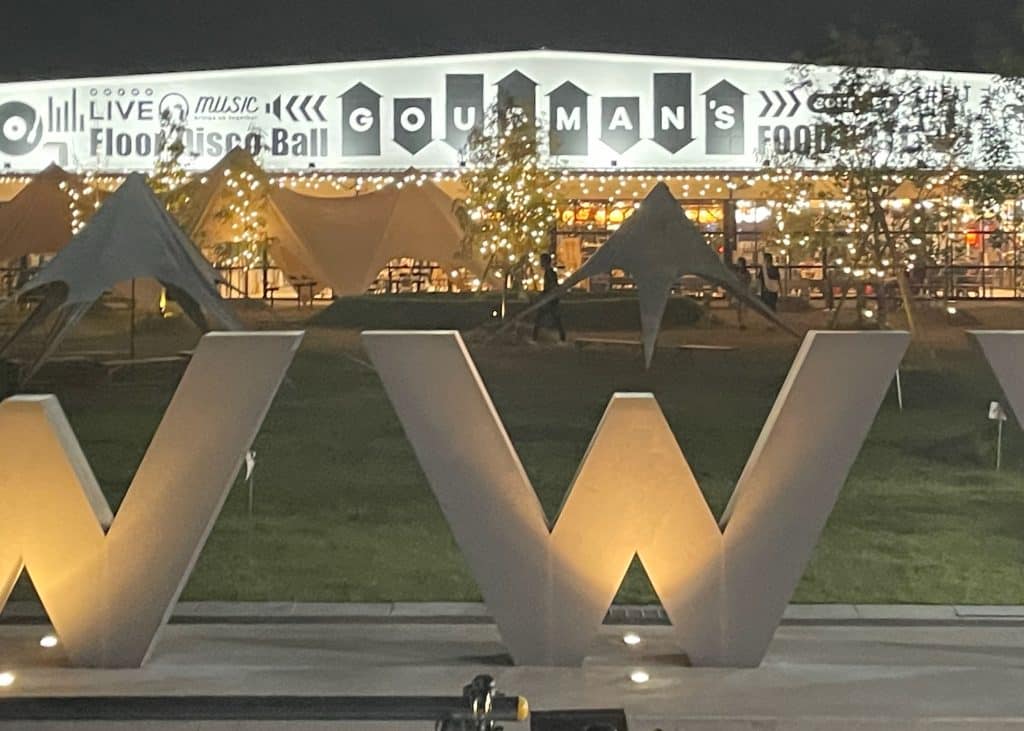
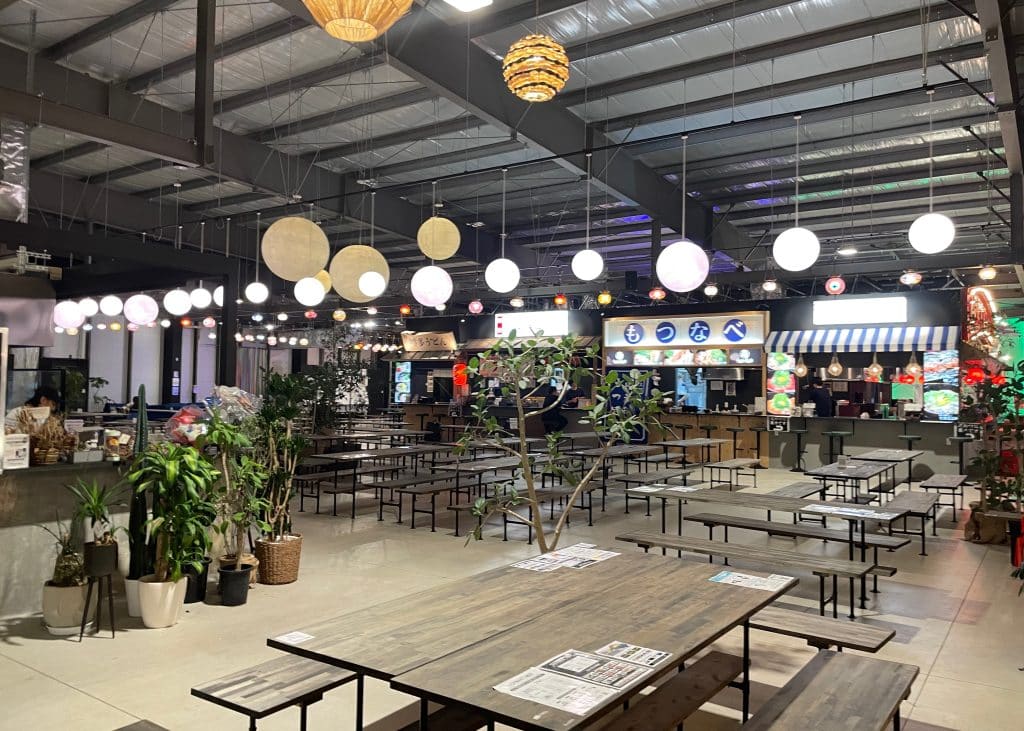
The Food Court: Dogs Welcome at the Table
Full disclosure: I am not a dog owner; I have a friendly cat but I like supporting any place that gives our furry friends the respect they deserve. The first thing my wife M. and I did when we arrived is head straight to the food court. It was a bit of a shock to see dogs eating at the table with their owners, but I have to admit they were pretty well behaved, a lot better than some of the toddlers running around.
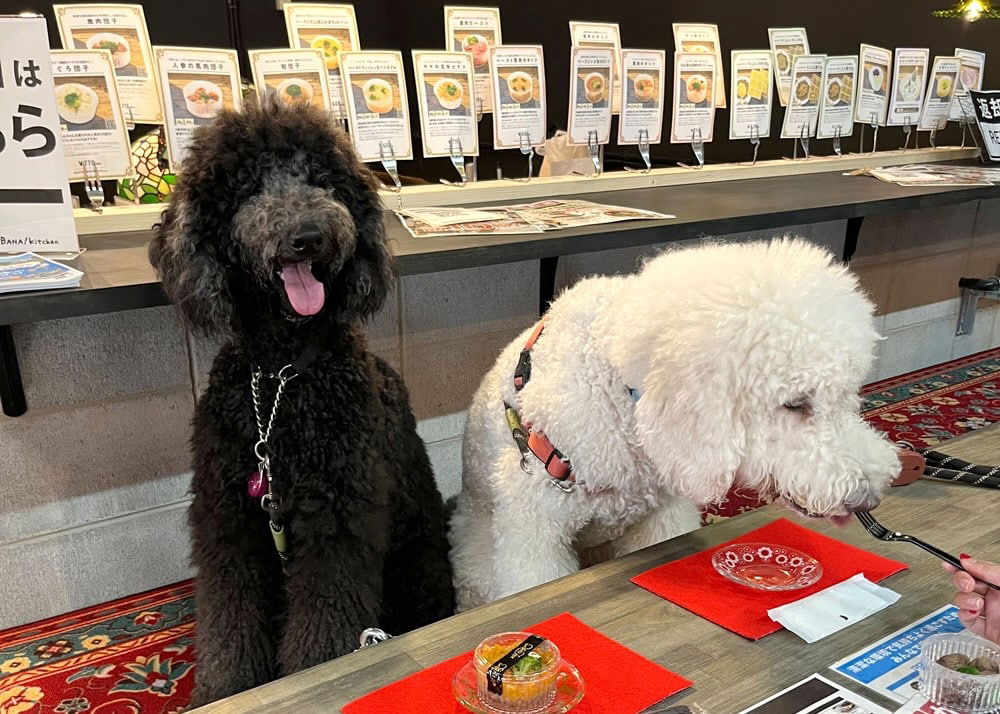
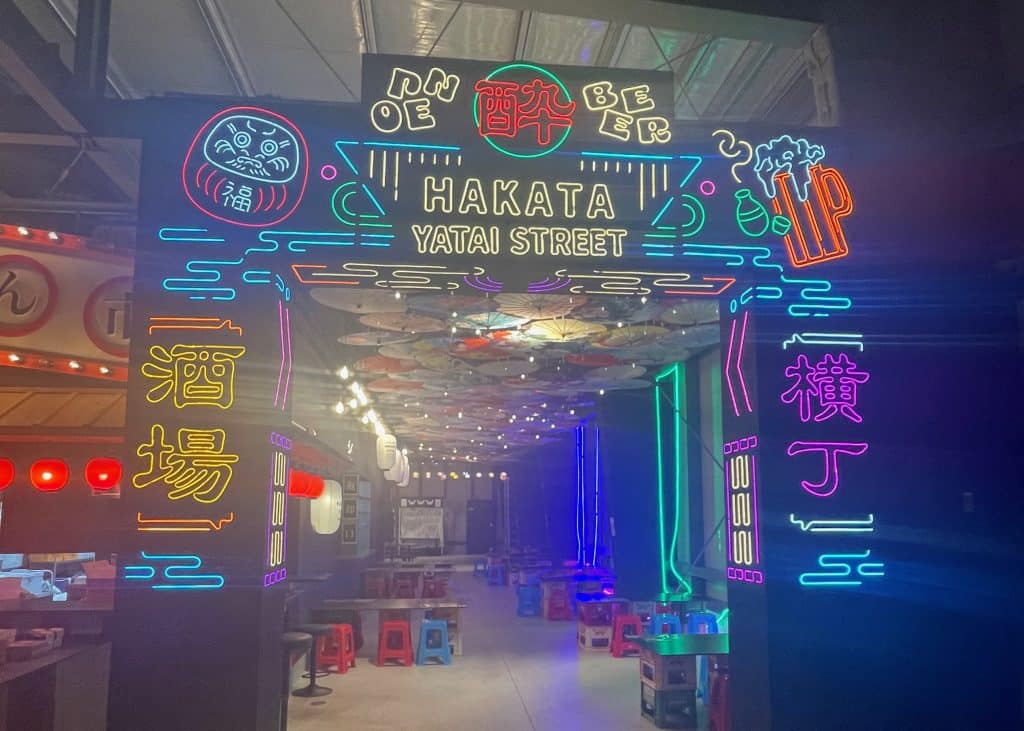
We ordered big fat cheeseburgers from The Burger Stand Nutmeg. The burgers delicious and came with a side of cheese-flavored French Fries. My wife and I then enjoyed a late and an espresso and ice cream at Red Corner, a shop that specializes in Italian coffee. The coffee came with a traditional biscotti almond biscuit. We wanted to visit Hakata Yata Umakamon that showcases street food from Kyushu, but we’ll have to save it for next time because we were stuffed to the gills.
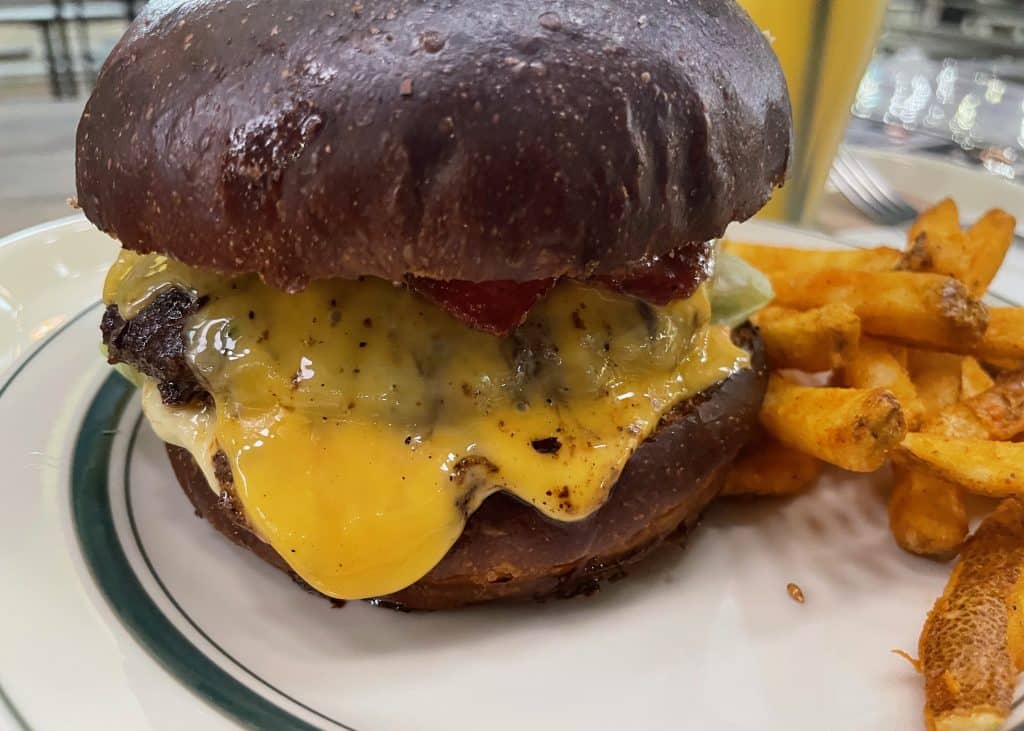
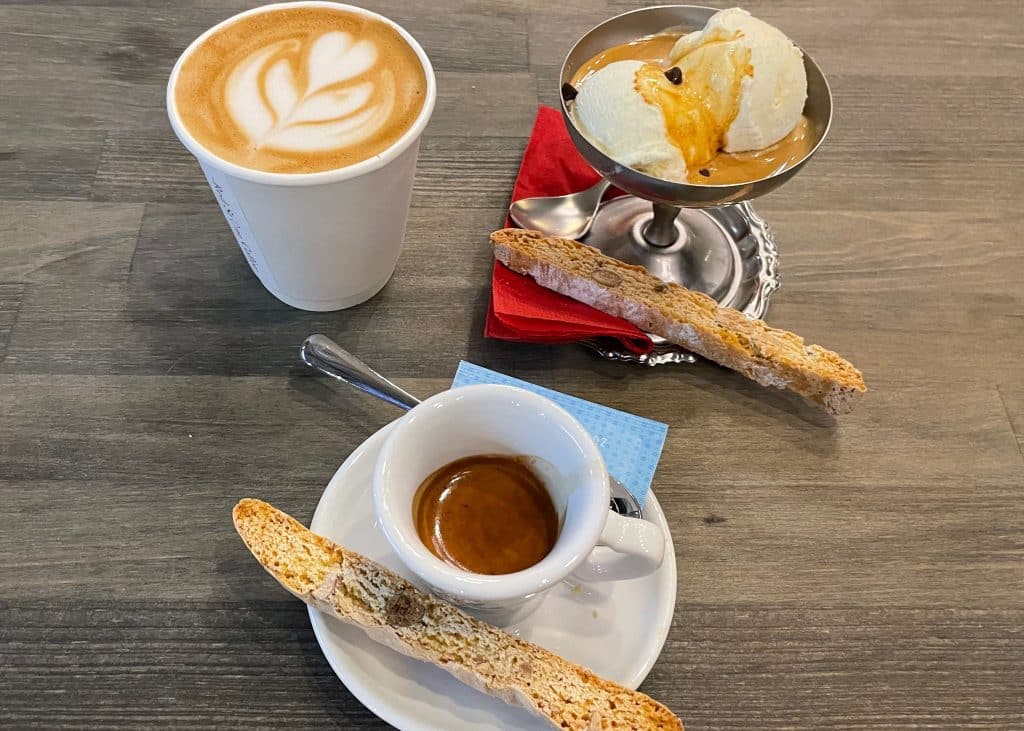
Big Screen and Chill
After finishing our coffee, we attended a free film screening of Charade, the 1963 comedy starring Audrey Hepburn, Cary Grant and Walter Matthau. It was nice to see it on the big screen. There is a kids playroom adjacent to in case children get bored of watching old movies. Once the film was over, we relaxed on hammocks in the food court—a nice touch because you don’t see many hammocks in Japan. I even saw some people snuggling up with their dogs, but it does appeared to be allowed here.
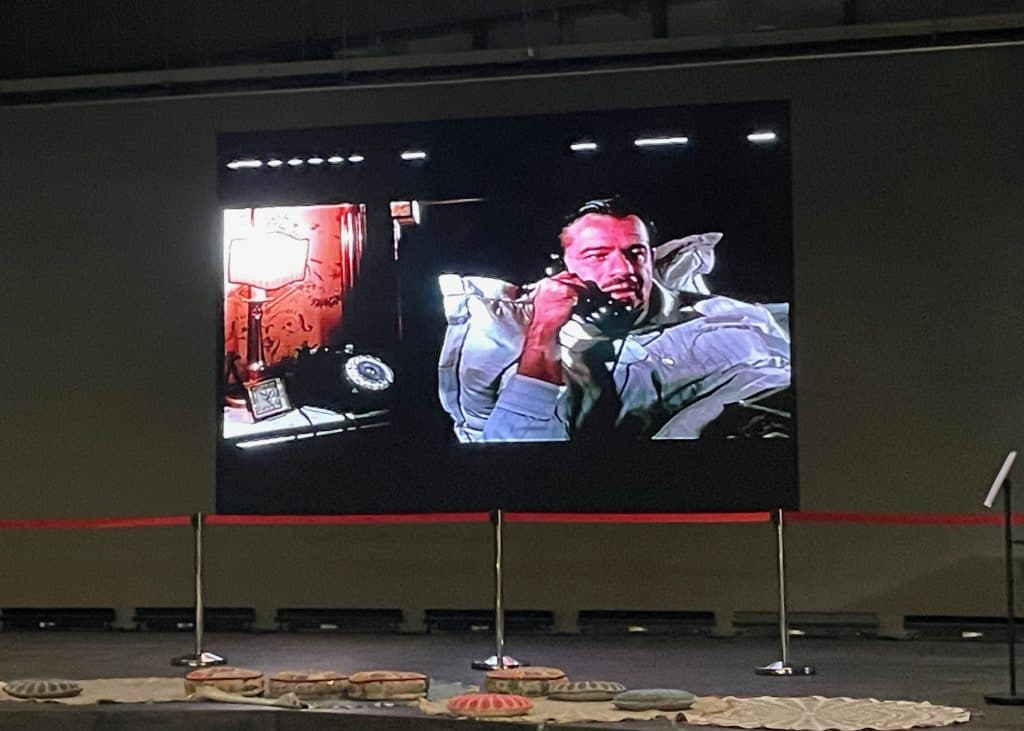
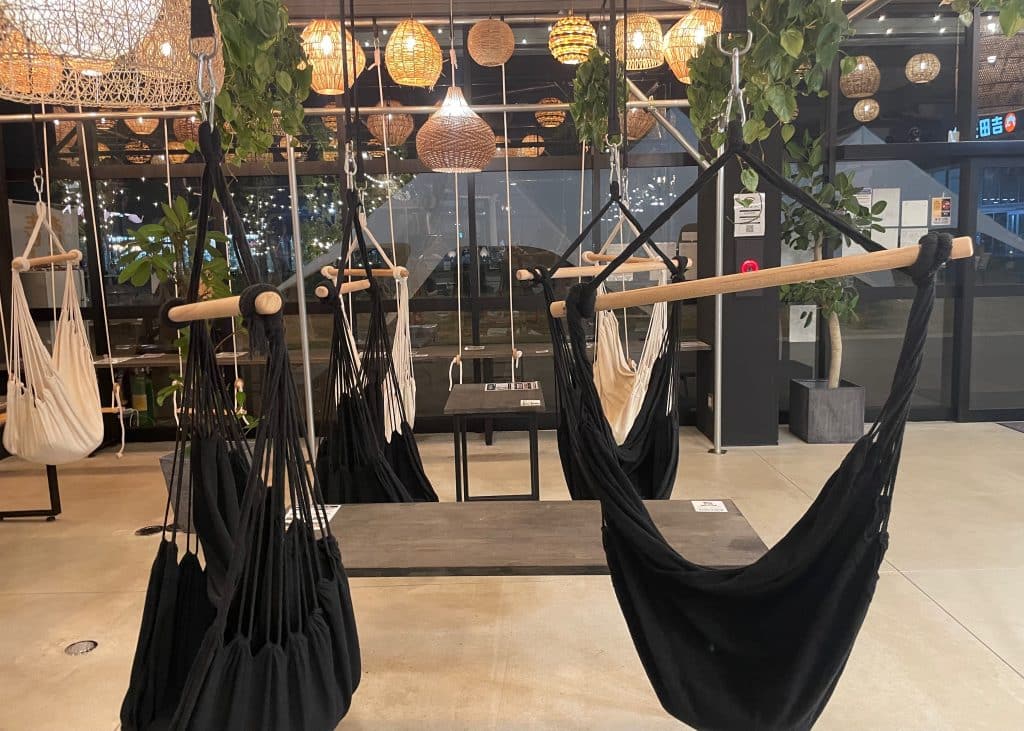
Soak in a Bath House and Stay the Night
We walked around outside and watched the dogs running around the dog run. Nearby families were enjoying a barbecue in the moonlight. This area kind of reminds me of Vermont and parts of Canada. Whatawon has a Kyoto-style bath house called Sokotoko, that includes a cafe and a recreation room where you can play darts and table tennis for no extra cost.
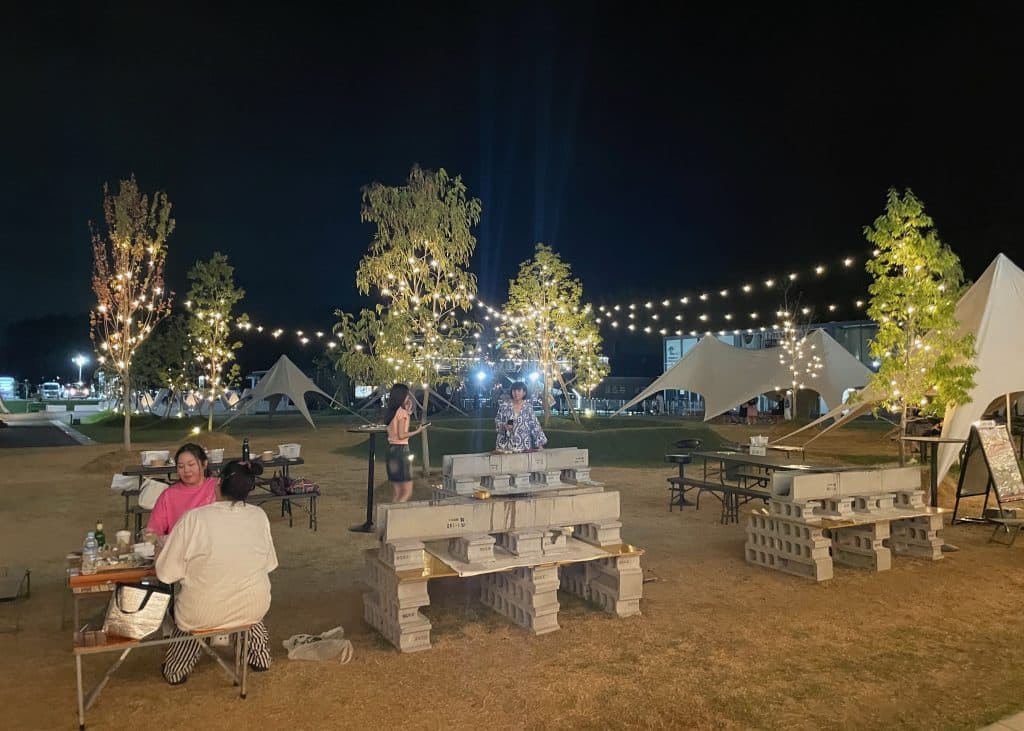
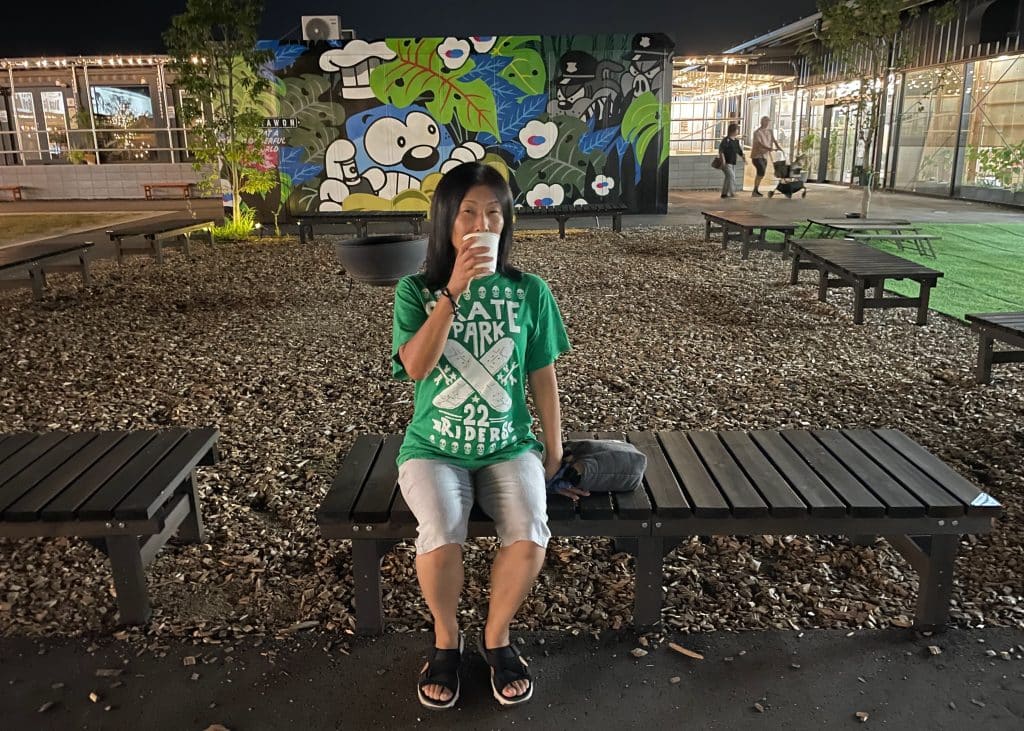
Whatawon is just a 30-minute drive from Kansai International Airport (or 58 minutes by public transportation), making it a convenient stop before catching a flight. You can even stay overnight in one of their luxury campers, which certainly is a unique experience. You can write home and tell all of your friends that you camped out at a shopping mall in Osaka.
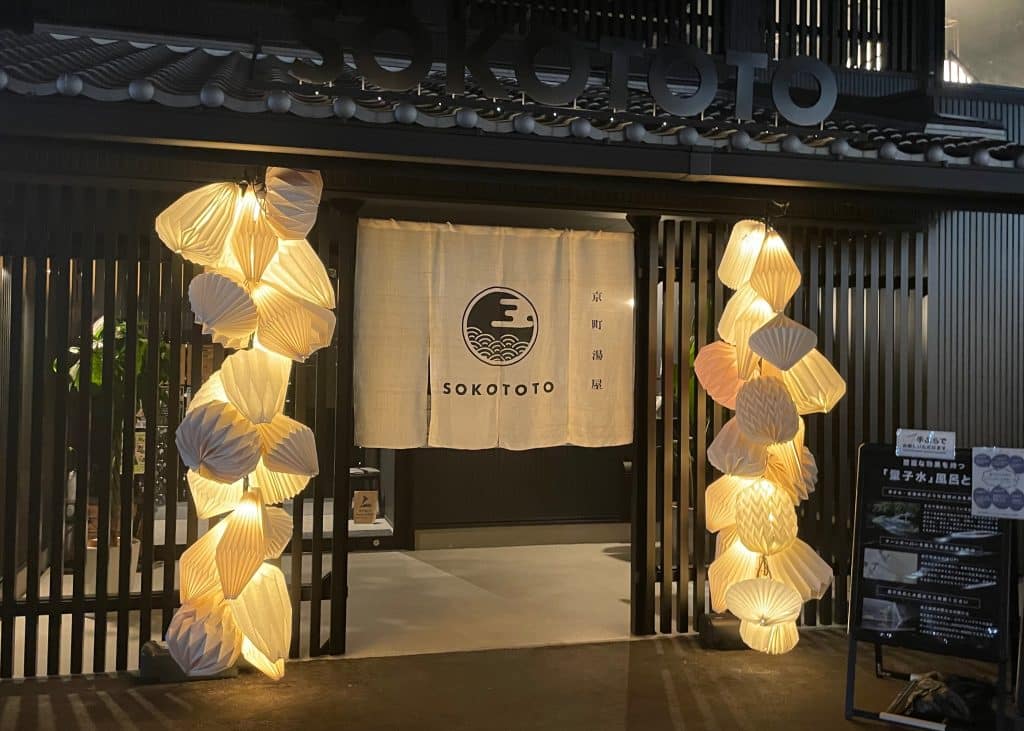
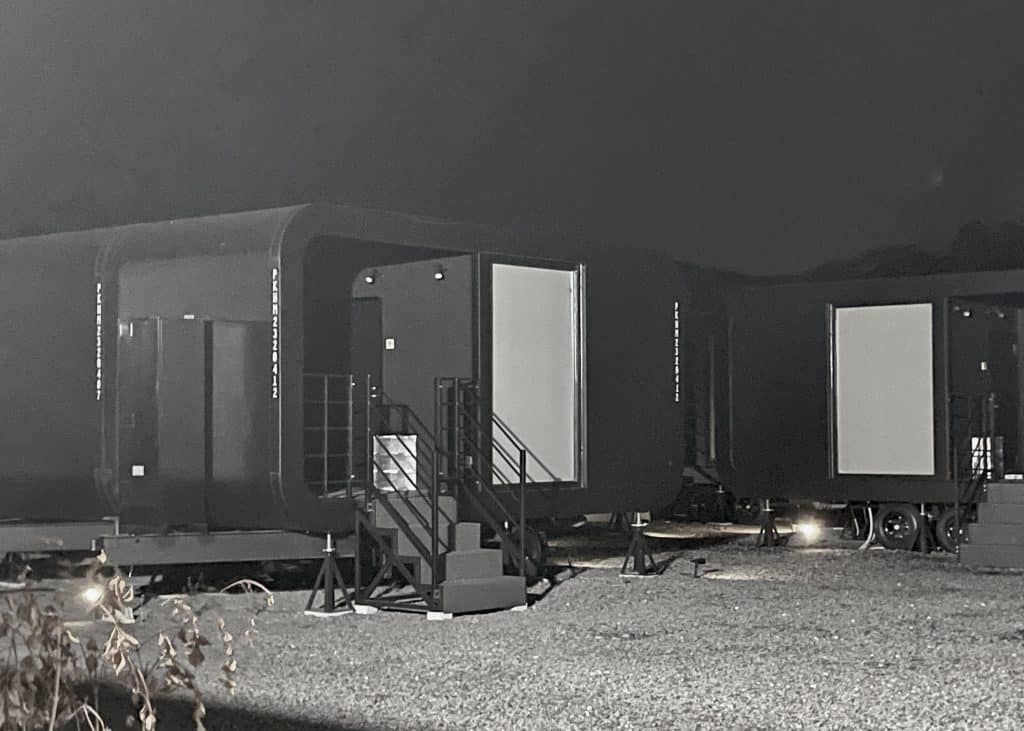
Spirited Away at Ishikiri Shrine in Higashiosaka: A must for Ghibli Fans!
Let me start off by saying that Ishikiri Tsurugiya Jinja has no official connection to Studio Ghibli, but neither does Jiufen in Taiwan, but that hasn’t stopped fans of director Hiyao Miyazaki from traveling there in droves. This is just my own personal observation after spending a lovely afternoon there with my wife. Ishikiri Shrine and the nearby shopping street area is yet another reason to visit Higashiosaka, which is still pretty much unknown to most tourists.
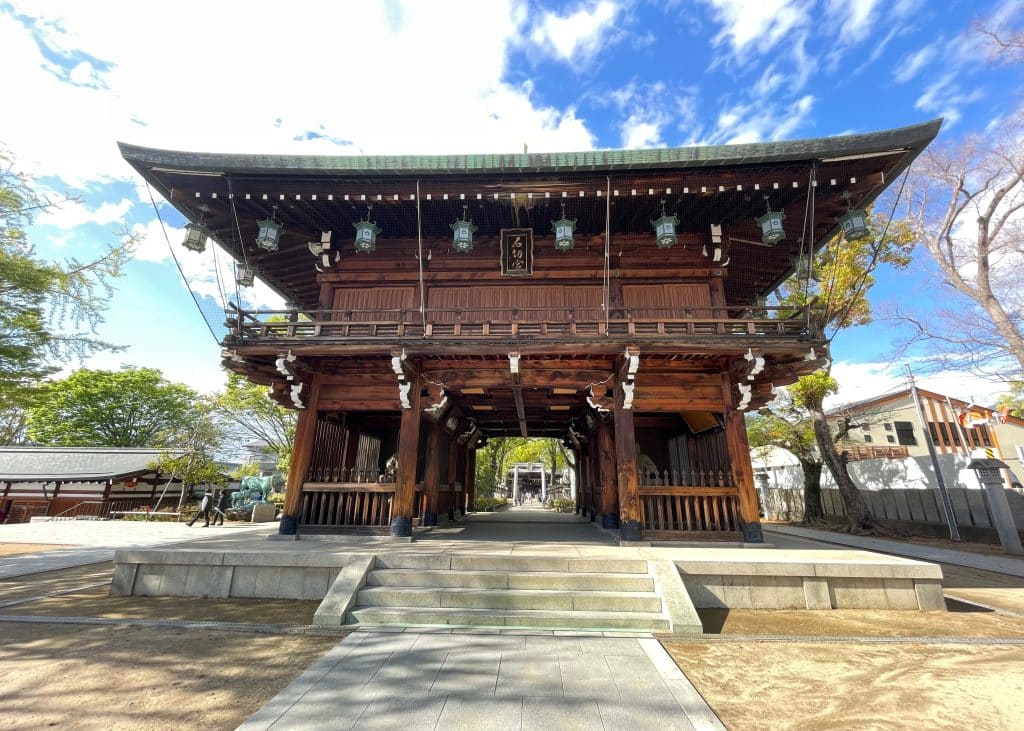
Ishikiri Shrine, a 15-minute walk from Ishikiri Station on the Kintetsu Osaka Higashi Line, has a history that dates back 2,700 years. It is believed that serious illnesses, from boils to cancer can be cured by praying to the two enshrined deities here. I was especially drawn to the statue of Umashimaji no Mikoto, one of the deities, depicted holding a sword while pointing his finger outward. Another interesting sight was the bronze statue of a sacred horse, which, as it turns out, was once a racehorse owned by a devoted worshipper of the shrine.
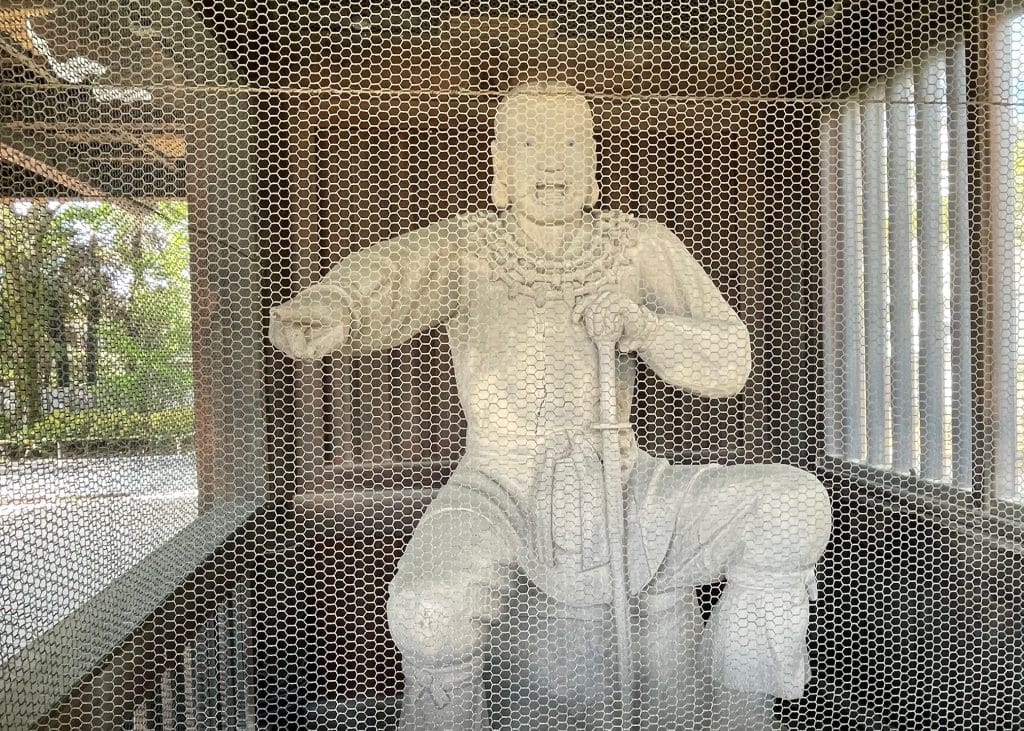
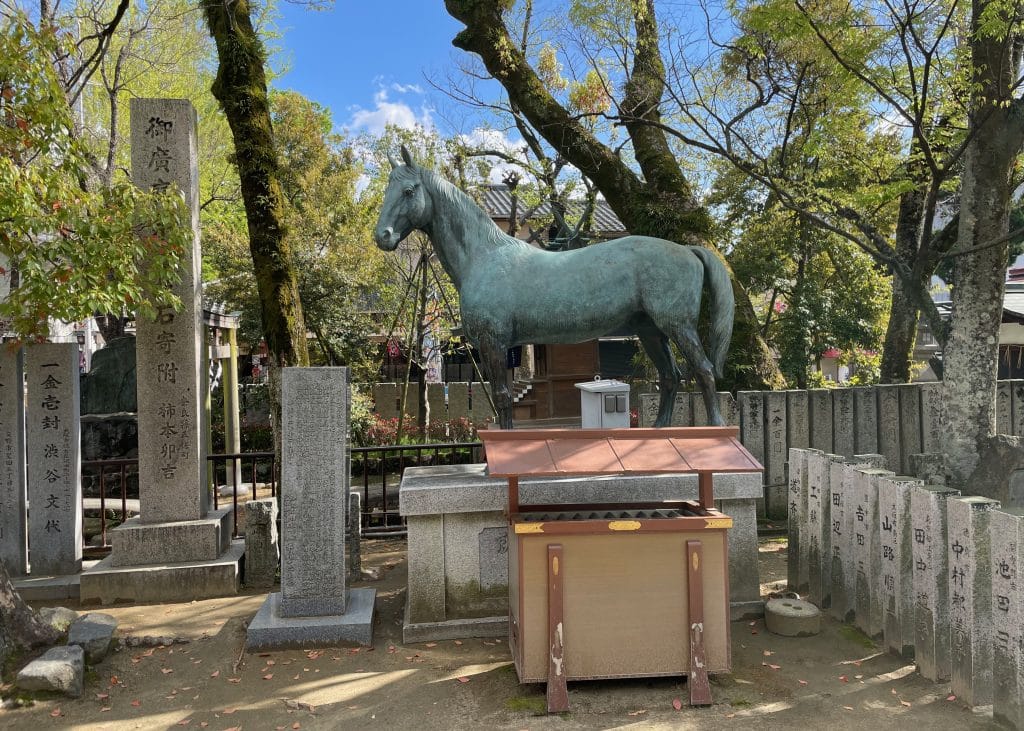
Ishikiri Sando Shopping Street
After visiting the shrine, we made our way Ishikiri Sando Shopping Street, which is famous for fortune tellers and nostalgic old shops that feature local delicacies such as Izumo Soba and Ishikiri Semba. This is an absolutely charming old street and a wonderful place to take photos that have the “Ghibli effect” without using the popular app that everyone seems to have discovered recently. I took a fantastic photo of my wife in front of a fortune teller that looks like a still from Spirited Away.
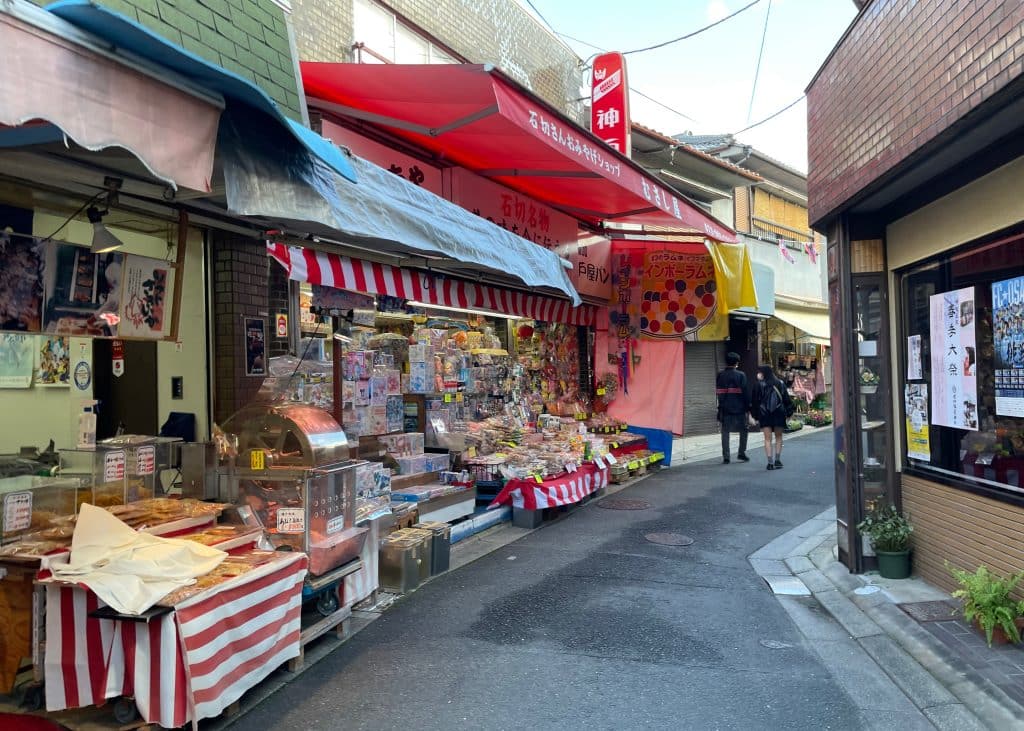
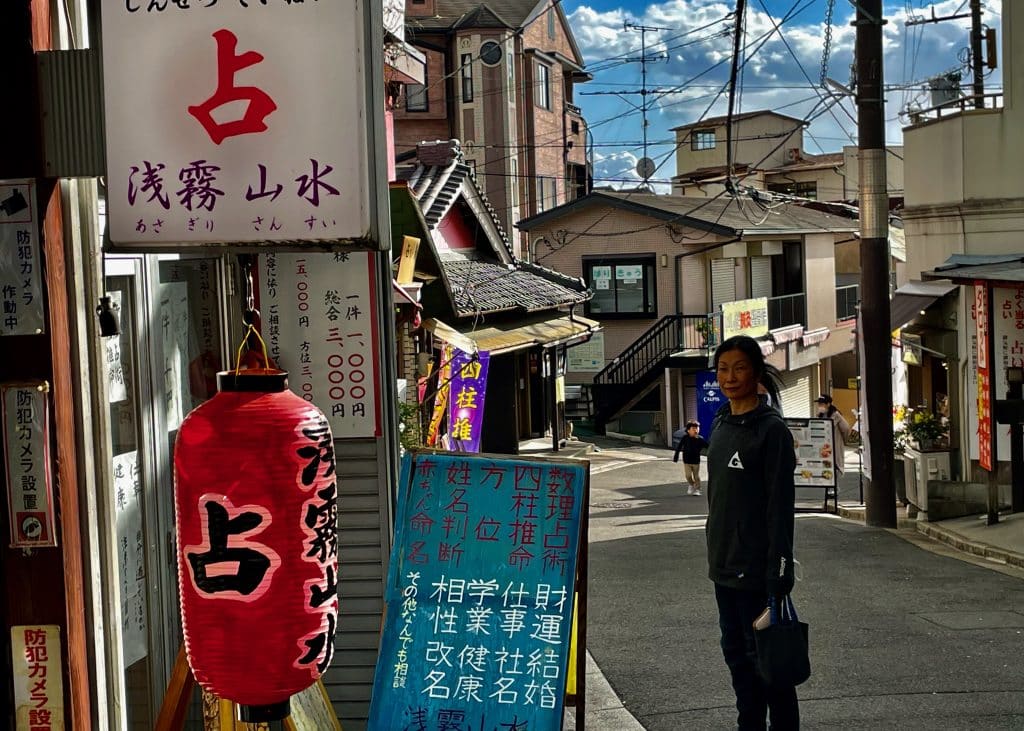
The Great Buddha Statue of Ishikiri
Further on up we came across a very impressive statue of Buddha, which has an interesting backstory. This area was once a community for Chinese immigrants, many of whom worked building the Ikoma Tunnel in the Meiji Era, which is why there are many fortune tellers and shops that sell Chinese medicine. One of the most successful Chinese medicine shops was owned by Mr. Sakamoto. In 1980, he had a towering six-meter bronze statue of a seated Buddha placed on the mountainside and built a small temple, Kawachi-Ishikiriyama Daibutsu-ji, to accompany it.
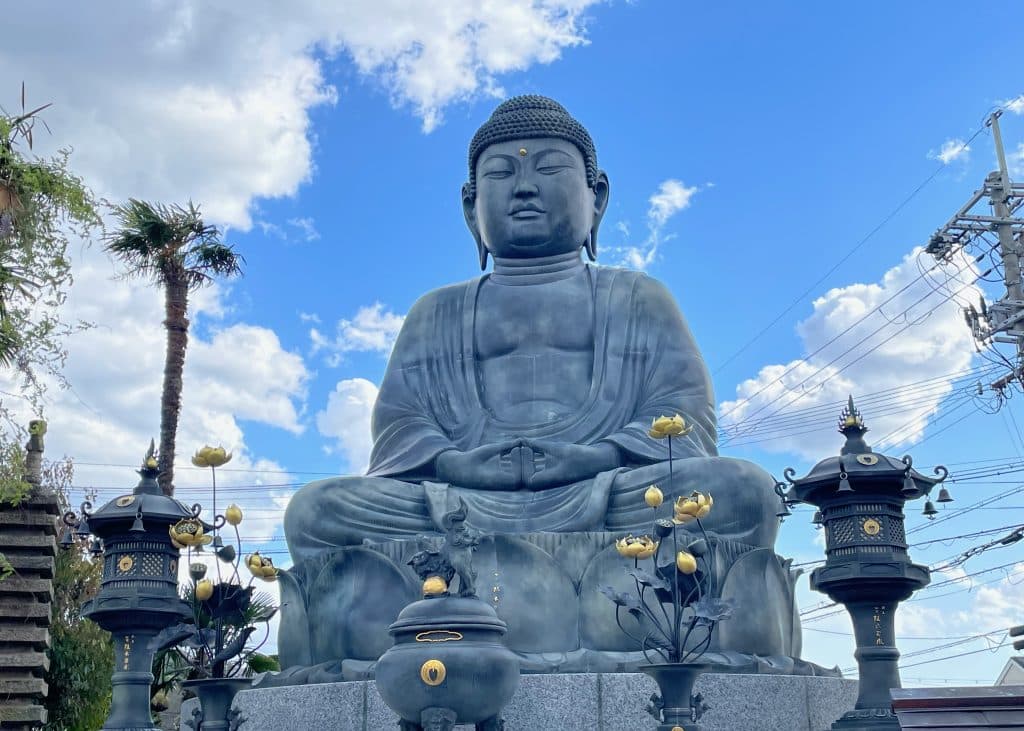
Ishikiri Daibutsu is touted as one of “Japan’s Three Great Buddha” (Nippon San Daibutsu, 日本三大仏). The others are Todaiji Daibutsu in Nara and Kamakura Daibutsu in Kanagawa. Admission to the temple is free.
Coffee Shop Twinkle in Ishikiri
While down the road we spotted a cat that seemed to be on a mission so we followed it to a coffee shop called Triangle, which was built on the first floor of a residence. We decided to go inside for a cup of coffee but the cat decided not to join us. The cafe was filled with interesting unusual plants, hand made wind chimes and a display case of antiques such as vintage cigarette lighters and old pocket watches.
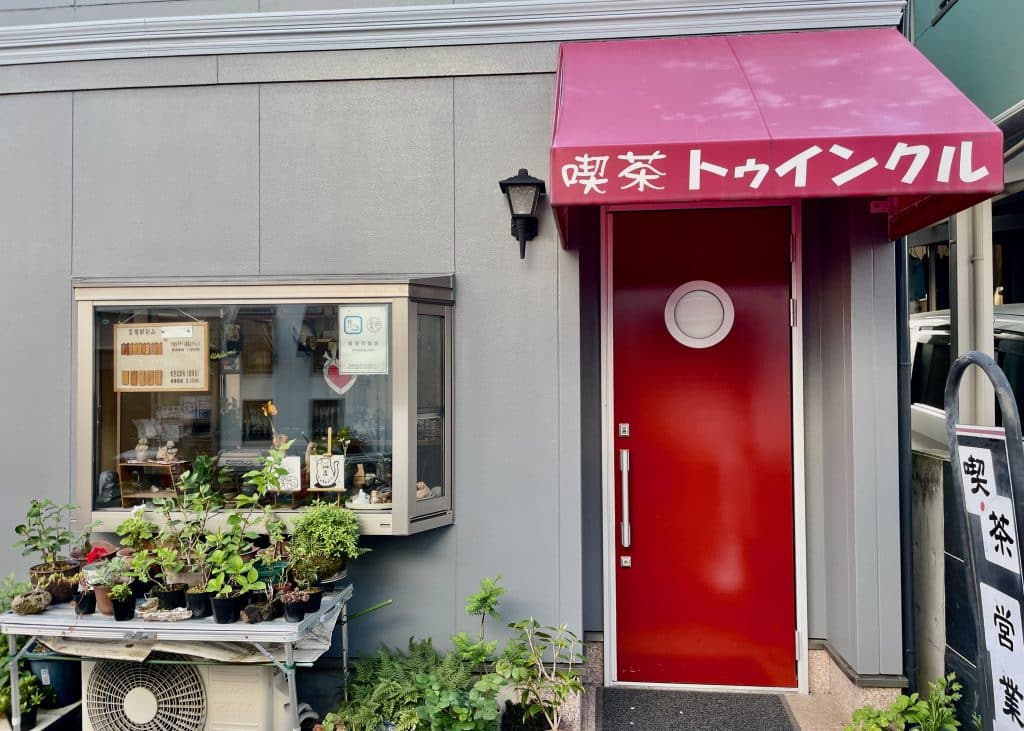
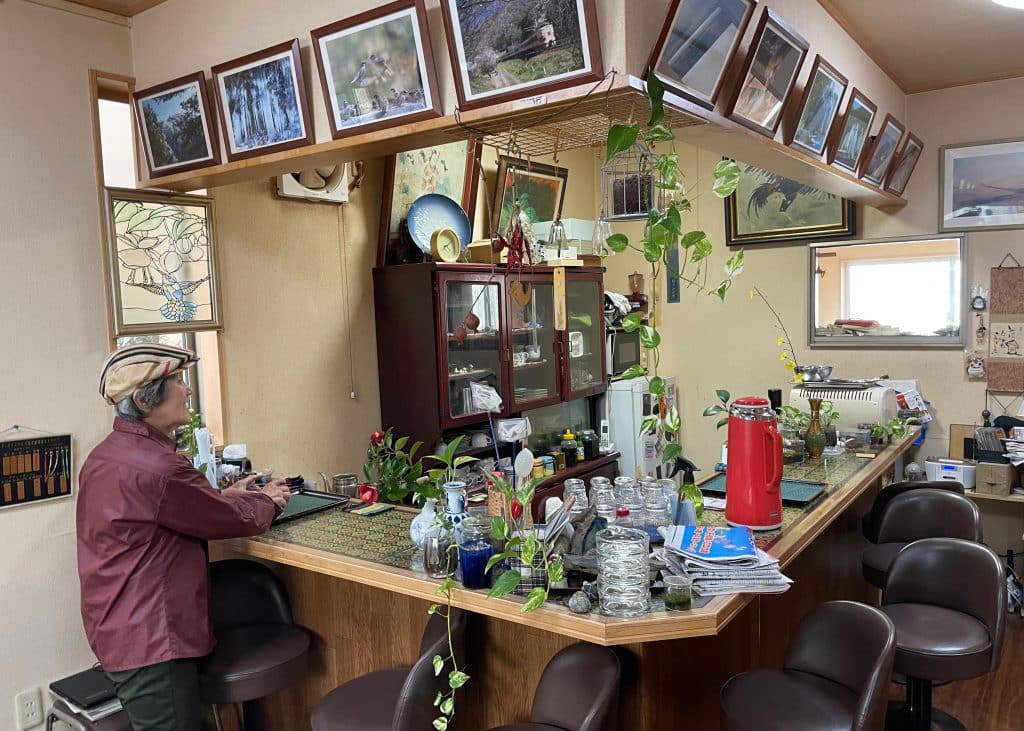
We had a nice chat with the owner who showed us photo books from her travels and told us a bit about the history of the area. My wife asked about some of the plants and the owner insisted that we take some cuttings home.I tried to find out information about Twinkle online but there is not a single review on Tabelog or Google Maps. Well, there is one review on the latter; someone who didn’t even visit the shop gave it two stars for being “hard to enter.” I never understood people who base their entire restaurant decisions on stars given by random strangers. I’m glad we followed the cat.
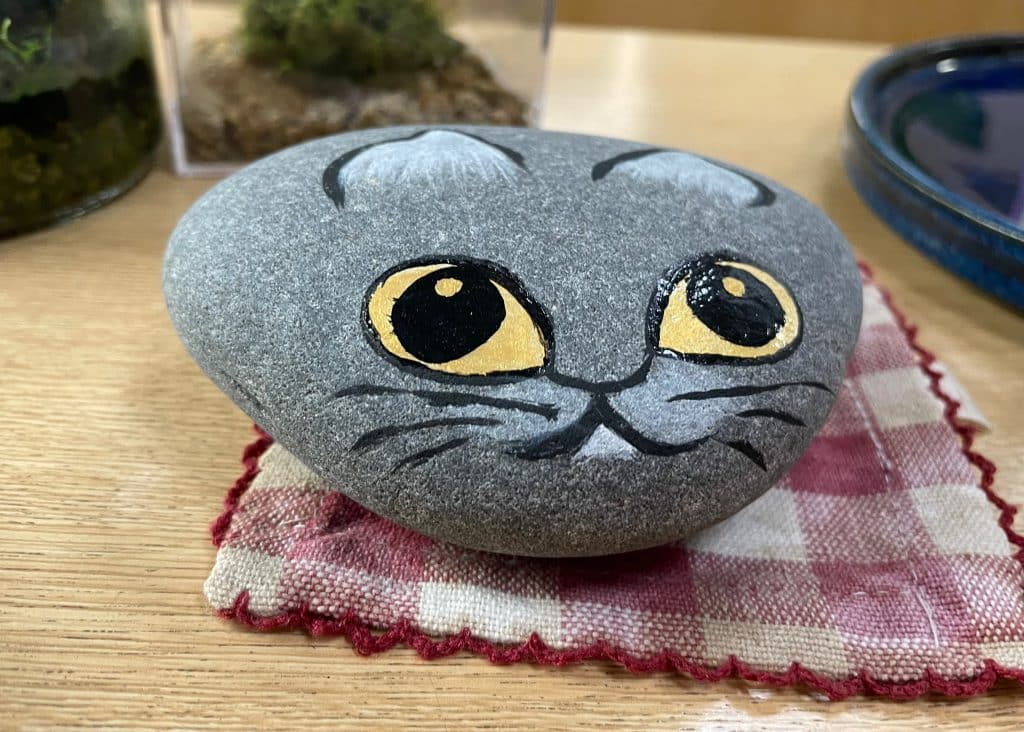
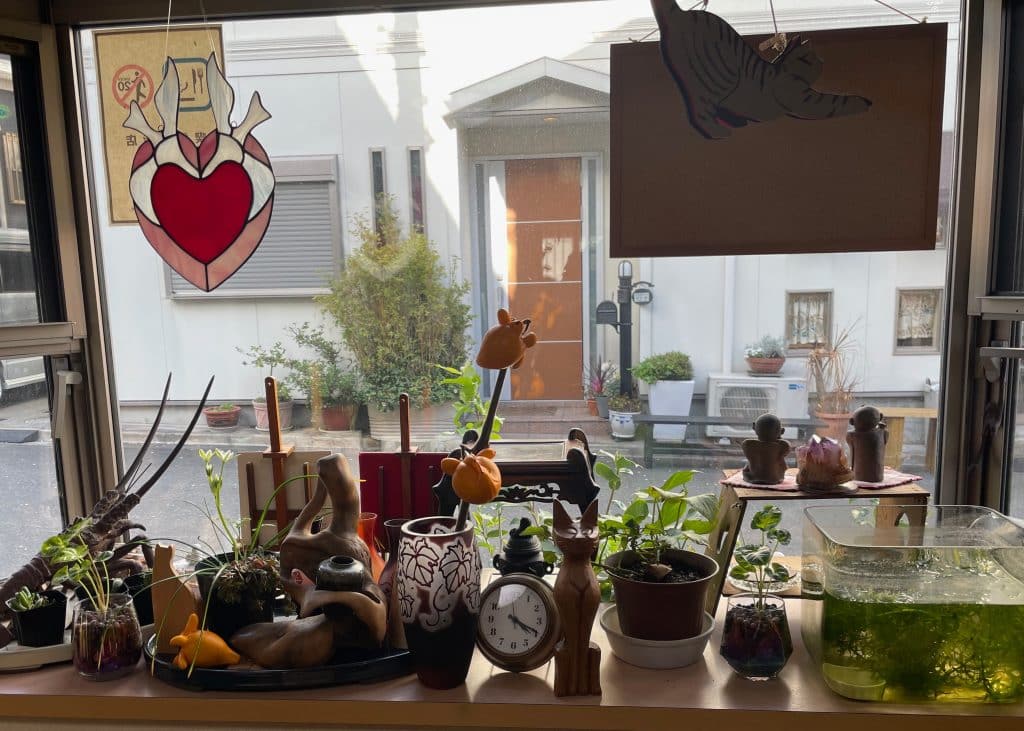
Recommended Live Music
The Sound Monkeys from Konstanz Germany play Hokage on April 11th. The duo will appeal to fans of The Pixies and The Feelies. Check out their singles You (Anthem of Boats) and 404 Not Found. Tickets are only ¥2,000 in advance (¥3,000 at the door), so take a chance on this cool band. The Tsuiteruz, Merry Ghosts, and Fujiyama Beat Club support.

Namba Mele hosts London-based band Mika Bomb on April 25th. The Pop-Punk band that includes Japanese ex-pats signed to Grand Royal in 2000. Check out singles “Super Sexy Razor Happy Girls” and “Heart Attack” that are representative of their distortion heavy-pop sound. The opening is Lolita #18 One of the most popular punk bands of the 90s who recorded with Joey Ramone and The Toy Dolls. The Yayako (whom I have seen three times) open the show and their energetic brand of garage rock is a real treat. Tickets are ¥3,000/¥3,500. Reserve advance tickets here.
Post Rock/Lo-Fi band Super Gum from Brussels, Belgium play Namba Bears on April 27th. The band is influenced by free jazz and quirky Japanese pop. You can get an idea of their sound by listening to their song Mlieu. Tickets are ¥2,800/¥3,300. Get the cheaper advance ticket by emailing nambabears@gmail.com. Molo Molo featuring guitarist Kota Yamaguchi support.
Art: Ken Hamaguchi Exhibition at Pol Gallery (until April 13th)
Tokyo-based painter Ken Hamaguchi will have an exhibition at Pol Gallery which that will include material from his 2005 zine Heavy Metal Manic which includes his unique takes on Sid Vicious, Black Flag, Public Enemy, Paris Hilton and Shimura Ken. Opening hours are Mon/Fri (13:00-18:00) and Sat/Sun (12:00-19:00) Closed: Tue, Wed, Thur.
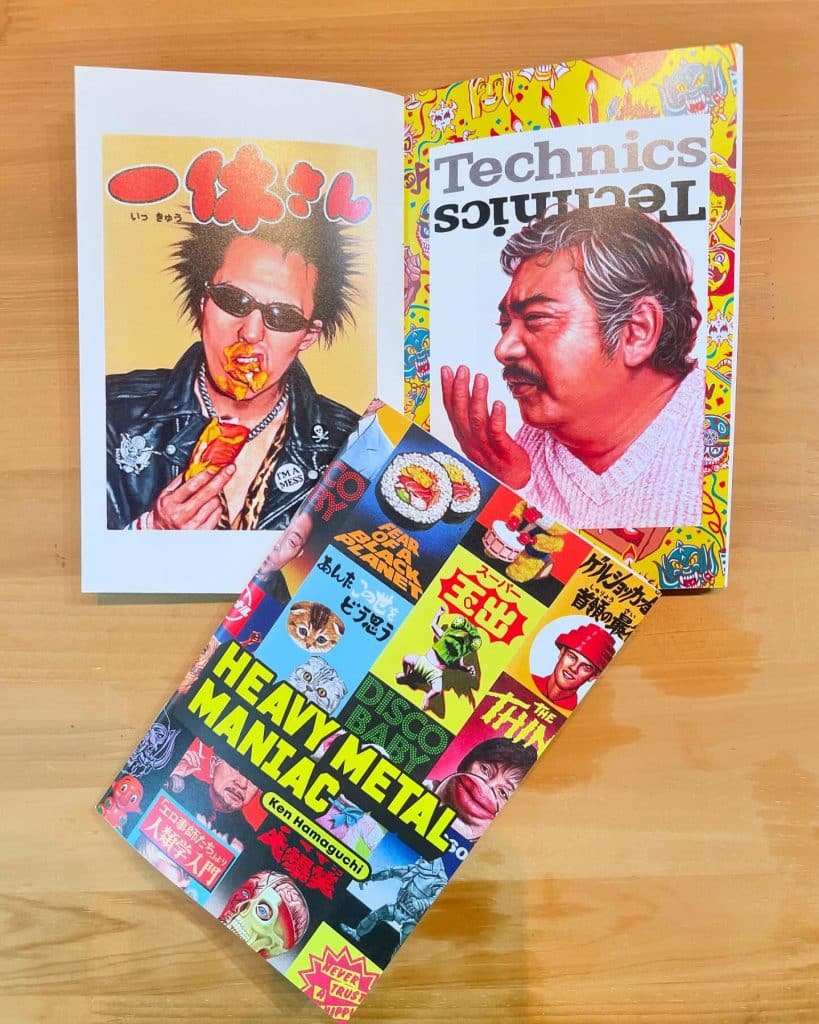
Museum: Tadao Ando Exhibition at Vs
Osaka-born architect Tadao Ando will have an exhibition called “Youth” at Vs in Kita Ward that “presents a comprehensive view of his ambitious journey, capturing his past challenges, present work, and vision for the future.” The exhibit will feature full-scale reproduction of one of Ando’s best-known work Church on the Water, as well as a retrospective look at the history of Naoshima Island, in the Seto Inland Seas that draws visitors from all over the world for its art museums and installations. General admission tickets are ¥1,800; ¥1,500 for college students, and ¥1,000 for high school students and below. Reserve a ticket here.
